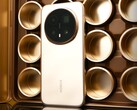Verdict - Sony Xperia 1 VII
The answer to the question in the teaser is yes, but there is a small catch. If you enjoy taking photos in automatic mode, you likely won't be satisfied with the Xperia 1 VII. Just like its predecessor, the Sony smartphone thrives on being configured down to the smallest detail to take good photos. In standard photo mode, the shots are also great, but ultimately no better than those of the "point-and-shoot" competition.
The Sony Xperia 1 VII is not just a niche product, but also a top-of-the-line smartphone. With the Snapdragon 8 Elite, Wi-Fi 7, long battery life, the bright 120 Hz OLED, a premium feel, and its powerful triple camera system, it definitely deserves to be called a flagship device.
However, the Xperia 1 VII also inherits a few of its predecessor's drawbacks. The display bezels on the top and bottom are quite thick by 2025 standards, charging works at a maximum of 30 watts, and there's no more than 256 GB of storage. By today's standards, the 12 MP telephoto camera is also underpowered for high-end needs.
Pros
Cons
Price and availability
In the UK, the Sony Xperia 1 VII can be purchased for £1,399 from the manufacturer. At the time of reviewing, the device is currently unavailable on Amazon in the US.
Table of Contents
- Verdict - Sony Xperia 1 VII
- Specifications
- Case - A light camera phone with classy haptics
- Features - Only 256 GB of storage
- Software - The Xperia 1 VII already runs Android 16
- Communication and GNSS - A world phone with good GPS and WiFi 7
- Telephone functions and voice quality
- Cameras - Powerful tech not exploited by the automatic mode
- Accessories and warranty - Also lacking a USB cable
- Input devices and operation - A responsive Xperia phone
- Display - A bright 120 Hz OLED with BT.2020 color space
- Performance - The Xperia 1 VII packs a Snapdragon 8 Elite
- Games - Well-equipped for games
- Emissions - A hot smartphone with good sound
- Battery runtimes - A long-lasting Sony smartphone
- Notebookcheck overall rating
- Possible alternatives compared
Sony has relaunched its high-end Xperia 1 smartphone, emphasizing it even more strongly as a creative tool for photography enthusiasts. The Xperia 1 VII features a more powerful ultra-wide-angle camera (previously 12 MP) that now possesses a resolution of 48 MP. It also offers greater performance, a brighter display, and longer support.
Specifications
Case - A light camera phone with classy haptics
The dust and waterproof Xperia 1 VII keeps the elongated, angular design with the thick display edges at the top and bottom seen in the Xperia 1 VI. A metal frame connects the OLED panel (protected by Gorilla Glass Victus 2) to the Gorilla Glass Victus rear panel.
The premium feel has also been retained. With its finely textured surface finish, the rear cover of the premium phone is available in green, purple, and black. It feels very high-quality to the touch, and its non-slip surfaces remain virtually immune to fingerprints.
Features - Only 256 GB of storage
The Xperia 1 VII is unusually equipped for a premium smartphone, coming with a dedicated camera button and a 3.5 mm audio jack. It also offers only 256 GB of storage, which can be expanded up to 2 TB via a microSD card. The fast USB-C port supports wired image output to HDMI or DisplayPort interfaces. The popular feature of using Xperia phones as an external monitor for Sony cameras via USB-C is unfortunately no longer available, and can now only be accessed via a subscription.
microSD card reader
The microSD card reader only achieved moderate transfer speeds with our reference card, the Angelbird AV Pro V60, which puts it on par with its predecessor.
| SD Card Reader | |
| average JPG Copy Test (av. of 3 runs) | |
| Average of class Smartphone (5.72 - 58.9, n=67, last 2 years) | |
| Sony Xperia 1 VI (Angelbird AV Pro V60) | |
| maximum AS SSD Seq Read Test (1GB) | |
| Average of class Smartphone (n=1last 2 years) | |
| Sony Xperia 1 VII (Angelbird AV Pro V60) | |
Cross Platform Disk Test (CPDT)
Software - The Xperia 1 VII already runs Android 16
The Xperia 1 VII launches with Android 15 and, at the time of reviewing at the end of September, it has already received an upgrade to Android 16. Sony complements the Android OS with its Sony UI user interface and a handful of in-house apps.
In addition to four OS upgrades, the Xperia 1 VII will receive six years of security updates. However, Sony's current support services aren't comparable to Samsung's.
Sustainability
Sony produces its plastic-free product packaging from robust paper material made from bamboo, sugarcane, and FSC-certified recycled paper. Paper tape is used for the shipping carton.
To further improve its environmental footprint, Sony uses its recycled plastic SORPLAS for many internal Xperia components. The manufacturer is aiming to reduce the ecological footprint of its products and activities to zero by 2050.
Communication and GNSS - A world phone with good GPS and WiFi 7
The Xperia 1 VII supports all 4G and 5G mobile frequencies that are important for the DACH region and also make it well-equipped for use abroad.
The smartphone supports Bluetooth 6.0, NFC, and Wi-Fi 7 for short-range connectivity. With our reference router, the Asus ROG Rapture GT-AXE11000, it achieved largely stable Wi-Fi transfer speeds, reaching up to 1,359 Mbps in the 6 GHz band.
| Networking | |
| Sony Xperia 1 VII | |
| iperf3 transmit AXE11000 | |
| iperf3 receive AXE11000 | |
| iperf3 transmit AXE11000 6GHz | |
| iperf3 receive AXE11000 6GHz | |
| Apple iPhone 16 Pro Max | |
| iperf3 transmit AXE11000 | |
| iperf3 receive AXE11000 | |
| iperf3 transmit AXE11000 6GHz | |
| iperf3 receive AXE11000 6GHz | |
| Google Pixel 9 Pro | |
| iperf3 transmit AXE11000 | |
| iperf3 receive AXE11000 | |
| iperf3 transmit AXE11000 6GHz | |
| iperf3 receive AXE11000 6GHz | |
| Honor Magic7 Pro | |
| iperf3 transmit AXE11000 | |
| iperf3 receive AXE11000 | |
| iperf3 transmit AXE11000 6GHz | |
| iperf3 receive AXE11000 6GHz | |
| Samsung Galaxy S25 Ultra | |
| iperf3 transmit AXE11000 | |
| iperf3 receive AXE11000 | |
| iperf3 transmit AXE11000 6GHz | |
| iperf3 receive AXE11000 6GHz | |
| Sony Xperia 1 VI | |
| iperf3 transmit AXE11000 | |
| iperf3 receive AXE11000 | |
| iperf3 transmit AXE11000 6GHz | |
| iperf3 receive AXE11000 6GHz | |
| Xiaomi 15 Ultra | |
| iperf3 transmit AXE11000 | |
| iperf3 receive AXE11000 | |
| iperf3 transmit AXE11000 6GHz | |
| iperf3 receive AXE11000 6GHz | |
| Average 802.11 a/b/g/n/ac/ax/be | |
| iperf3 transmit AXE11000 | |
| iperf3 receive AXE11000 | |
| iperf3 transmit AXE11000 6GHz | |
| iperf3 receive AXE11000 6GHz | |
| Average of class Smartphone | |
| iperf3 transmit AXE11000 | |
| iperf3 receive AXE11000 | |
| iperf3 transmit AXE11000 6GHz | |
| iperf3 receive AXE11000 6GHz | |
Telephone functions and voice quality
In our tests, the Xperia 1 VII scored highly with its excellent call quality via the earpiece and speakerphone. The caller's voices sounded natural and remained easily understandable thanks to the efficient noise cancellation.
In addition to VoLTE, the Sony phone supports Wi-Fi calling and dual SIM. Only one SIM card fits in the SIM tray, but an eSIM can also be activated.
Cameras - Powerful tech not exploited by the automatic mode
Just like its predecessor, the Xperia 1 VII features a triple camera setup and uses Zeiss lenses. However, the ultra-wide-angle camera now has a resolution of 48 MP, increasing the focal length range to 16 to 170 millimeters.
The 48 MP main camera and the 12 MP telephoto camera with its 7.1x optical zoom remain unchanged. The selfie camera has also retained its 12 MP resolution. It impresses with solid image quality and beautiful bokeh.
Shots in automatic mode are hardly better than those seen in the high-end competition, but only really come into their own in the Pro modes. In automatic mode, the main and ultra-wide-angle cameras still take very good photos in daylight and perform remarkably well even in low-light conditions. This also applies to video recordings, which can be recorded at up to 4K at 120fps.
The telephoto camera, with its variable 3.5x to 7.1x zoom, doesn't quite match the image quality of its competitors, but it manages to take solid shots with decent sharpness.
Image comparison
Choose a scene and navigate within the first image. One click changes the position on touchscreens. One click on the zoomed-in image opens the original in a new window. The first image shows the scaled photograph of the test device.
Daylight imageDaylight imageUltra-wide angle5x zoomLowlight image

Accessories and warranty - Also lacking a USB cable
Sony has omitted the 30-watt power adapter for the Xperia 1 VII. The phone only comes with a quick start guide and a safety information booklet.
The Sony Xperia 1 VII offers a 24-month warranty.
Input devices and operation - A responsive Xperia phone
Powered by the Snapdragon 8 Elite, 12 GB of RAM and an accurate touchscreen that has a 240 Hz sampling rate, the Xperia 1 VII achieves excellent system performance. The linear vibration motor provides subtle haptic feedback.
Due to the lack of facial recognition, the phone can only be unlocked biometrically using the fingerprint sensor. It's housed inside the power button and works reliably.
Display - A bright 120 Hz OLED with BT.2020 color space
Sony calls the 6.5-inch OLED the "brightest Xperia display ever." With a maximum luminance of 1,655 cd/m² (APL18) and 1,979 cd/m² (HDR), the 120 Hz panel delivers very good brightness. However, it's hardly any brighter than the Xperia I VI.
We observed PWM flickering of 240 Hz at every brightness level measured. Users sensitive to OLED flickering should expect some discomfort.
| |||||||||||||||||||||||||
Brightness Distribution: 99 %
Center on Battery: 1441 cd/m²
Contrast: ∞:1 (Black: 0 cd/m²)
ΔE ColorChecker Calman: 3.2 | ∀{0.5-29.43 Ø4.78}
ΔE Greyscale Calman: 2.7 | ∀{0.09-98 Ø5}
100% sRGB (Calman 2D)
Gamma: 2.19
CCT: 6476 K
| Sony Xperia 1 VII OLED, 2340x1080, 6.5" | Apple iPhone 16 Pro Max Super Retina XDR OLED, 2868x1320, 6.9" | Google Pixel 9 Pro OLED, 2856x1280, 6.3" | Honor Magic7 Pro OLED, 2800x1280, 6.8" | Samsung Galaxy S25 Ultra Dynamic AMOLED 2X, 3120x1440, 6.9" | Sony Xperia 1 VI OLED, 2340x1080, 6.5" | Xiaomi 15 Ultra AMOLED, 3200x1440, 6.7" | |
|---|---|---|---|---|---|---|---|
| Screen | 1% | 44% | 32% | 0% | 7% | 14% | |
| Brightness middle (cd/m²) | 1441 | 1055 -27% | 2083 45% | 1607 12% | 1357 -6% | 1305 -9% | 1041 -28% |
| Brightness (cd/m²) | 1450 | 1061 -27% | 2016 39% | 1609 11% | 1350 -7% | 1319 -9% | 1059 -27% |
| Brightness Distribution (%) | 99 | 93 -6% | 84 -15% | 95 -4% | 94 -5% | 98 -1% | 96 -3% |
| Black Level * (cd/m²) | |||||||
| Colorchecker dE 2000 * | 3.2 | 1.5 53% | 0.7 78% | 0.9 72% | 3.1 3% | 2.8 12% | 1 69% |
| Colorchecker dE 2000 max. * | 4.6 | 4.7 -2% | 2 57% | 1.8 61% | 4.7 -2% | 4.5 2% | 2.7 41% |
| Greyscale dE 2000 * | 2.7 | 2.3 15% | 1.1 59% | 1.7 37% | 2.2 19% | 1.4 48% | 1.9 30% |
| Gamma | 2.19 100% | 2.21 100% | 2.22 99% | 2.24 98% | 2 110% | 2.19 100% | 2.23 99% |
| CCT | 6476 100% | 6625 98% | 6560 99% | 6346 102% | 6391 102% | 6361 102% | 6697 97% |
* ... smaller is better
Screen Flickering / PWM (Pulse-Width Modulation)
| Screen flickering / PWM detected | 240 Hz Amplitude: 14.49 % | ||
The display backlight flickers at 240 Hz (worst case, e.g., utilizing PWM) . The frequency of 240 Hz is relatively low, so sensitive users will likely notice flickering and experience eyestrain at the stated brightness setting and below. In comparison: 53 % of all tested devices do not use PWM to dim the display. If PWM was detected, an average of 8108 (minimum: 5 - maximum: 343500) Hz was measured. | |||
A series of measurements with a fixed zoom level and different brightness settings (The amplitude curve at minimum brightness appears flat, but this is due to the scaling. The enlarged version of the amplitude at minimum brightness can be seen in the info box.)
In Standard mode, the color calibration isn't quite perfect, but the deviations are barely noticeable in everyday use. Creator mode offers a second picture mode that uses the larger BT.2020 color space instead of the DCI-P3 color space and is optimized for HDR with 10-bit color depth. White balance can be adjusted manually in both cases.
Display Response Times
| ↔ Response Time Black to White | ||
|---|---|---|
| 1.13 ms ... rise ↗ and fall ↘ combined | ↗ 0.578 ms rise | |
| ↘ 0.5555 ms fall | ||
| The screen shows very fast response rates in our tests and should be very well suited for fast-paced gaming. In comparison, all tested devices range from 0.1 (minimum) to 240 (maximum) ms. » 4 % of all devices are better. This means that the measured response time is better than the average of all tested devices (20.2 ms). | ||
| ↔ Response Time 50% Grey to 80% Grey | ||
| 1.22 ms ... rise ↗ and fall ↘ combined | ↗ 0.5655 ms rise | |
| ↘ 0.654 ms fall | ||
| The screen shows very fast response rates in our tests and should be very well suited for fast-paced gaming. In comparison, all tested devices range from 0.165 (minimum) to 636 (maximum) ms. » 5 % of all devices are better. This means that the measured response time is better than the average of all tested devices (31.6 ms). | ||
Performance - The Xperia 1 VII packs a Snapdragon 8 Elite
With the Snapdragon 8 Elite, the Xperia 1 VII features one of the fastest Android SoCs, making it unstoppable even in the most demanding apps. The Sony phone also delivers noteworthy GPU performance.
| UL Procyon AI Inference for Android - Overall Score NNAPI | |
| Google Pixel 9 Pro | |
| Samsung Galaxy S25 Ultra | |
| Honor Magic7 Pro | |
| Average of class Smartphone (3769 - 81594, n=135, last 2 years) | |
| Xiaomi 15 Ultra | |
| Sony Xperia 1 VII | |
| Sony Xperia 1 VI | |
| Average Qualcomm Snapdragon 8 Elite (8865 - 22767, n=18) | |
| Geekbench AI | |
| Single Precision NPU 1.5 | |
| Average of class Smartphone (80 - 5210, n=59, last 2 years) | |
| Sony Xperia 1 VII | |
| Average Qualcomm Snapdragon 8 Elite (246 - 676, n=10) | |
| Half Precision NPU 1.5 | |
| Average of class Smartphone (80 - 36297, n=59, last 2 years) | |
| Sony Xperia 1 VII | |
| Average Qualcomm Snapdragon 8 Elite (249 - 669, n=10) | |
| Quantized NPU 1.5 | |
| Average of class Smartphone (133 - 49889, n=59, last 2 years) | |
| Sony Xperia 1 VII | |
| Average Qualcomm Snapdragon 8 Elite (508 - 1576, n=10) | |
The Adreno 830 helps the Xperia 1 VII consistently achieve top rankings in graphics benchmarks such as 3DMark. Among the comparison devices, only the Samsung Galaxy S25 Ultra is faster due to its slightly higher clocked Snapdragon 8 Elite for Galaxy
GFXBench (DX / GLBenchmark) 2.7: T-Rex Onscreen | 1920x1080 T-Rex Offscreen
GFXBench 3.0: on screen Manhattan Onscreen OGL | 1920x1080 1080p Manhattan Offscreen
GFXBench 3.1: on screen Manhattan ES 3.1 Onscreen | 1920x1080 Manhattan ES 3.1 Offscreen
GFXBench: on screen Car Chase Onscreen | 1920x1080 Car Chase Offscreen | on screen Aztec Ruins High Tier Onscreen | 2560x1440 Aztec Ruins High Tier Offscreen | on screen Aztec Ruins Normal Tier Onscreen | 1920x1080 Aztec Ruins Normal Tier Offscreen | 3840x2160 4K Aztec Ruins High Tier Offscreen
| 3DMark / Wild Life Extreme Unlimited | |
| Samsung Galaxy S25 Ultra | |
| Sony Xperia 1 VII | |
| Honor Magic7 Pro | |
| Xiaomi 15 Ultra | |
| Apple iPhone 16 Pro Max | |
| Sony Xperia 1 VI | |
| Google Pixel 9 Pro | |
| 3DMark / Wild Life Extreme | |
| Samsung Galaxy S25 Ultra | |
| Sony Xperia 1 VII | |
| Xiaomi 15 Ultra | |
| Honor Magic7 Pro | |
| Apple iPhone 16 Pro Max | |
| Sony Xperia 1 VI | |
| Google Pixel 9 Pro | |
| 3DMark / Wild Life Unlimited Score | |
| Samsung Galaxy S25 Ultra | |
| Sony Xperia 1 VII | |
| Honor Magic7 Pro | |
| Xiaomi 15 Ultra | |
| Sony Xperia 1 VI | |
| Apple iPhone 16 Pro Max | |
| Google Pixel 9 Pro | |
| 3DMark / Solar Bay Score | |
| Samsung Galaxy S25 Ultra | |
| Sony Xperia 1 VII | |
| Honor Magic7 Pro | |
| Xiaomi 15 Ultra | |
| Apple iPhone 16 Pro Max | |
| Sony Xperia 1 VI | |
| Google Pixel 9 Pro | |
| 3DMark / Solar Bay Unlimited Score | |
| Samsung Galaxy S25 Ultra | |
| Sony Xperia 1 VII | |
| Honor Magic7 Pro | |
| Xiaomi 15 Ultra | |
| Sony Xperia 1 VI | |
| Apple iPhone 16 Pro Max | |
| Google Pixel 9 Pro | |
| 3DMark / Steel Nomad Light Unlimited Score | |
| Samsung Galaxy S25 Ultra | |
| Xiaomi 15 Ultra | |
| Xiaomi 15 Ultra | |
| Sony Xperia 1 VII | |
| Honor Magic7 Pro | |
| Apple iPhone 16 Pro Max | |
| Sony Xperia 1 VI | |
| Google Pixel 9 Pro | |
| 3DMark / Steel Nomad Light Score | |
| Samsung Galaxy S25 Ultra | |
| Sony Xperia 1 VII | |
| Honor Magic7 Pro | |
| Xiaomi 15 Ultra | |
| Xiaomi 15 Ultra | |
| Apple iPhone 16 Pro Max | |
| Sony Xperia 1 VI | |
| Google Pixel 9 Pro | |
| GFXBench (DX / GLBenchmark) 2.7 / T-Rex Onscreen | |
| Google Pixel 9 Pro | |
| Sony Xperia 1 VI | |
| Xiaomi 15 Ultra | |
| Samsung Galaxy S25 Ultra | |
| Honor Magic7 Pro | |
| Sony Xperia 1 VII | |
| Apple iPhone 16 Pro Max | |
| GFXBench (DX / GLBenchmark) 2.7 / T-Rex Offscreen | |
| Sony Xperia 1 VII | |
| Xiaomi 15 Ultra | |
| Samsung Galaxy S25 Ultra | |
| Honor Magic7 Pro | |
| Apple iPhone 16 Pro Max | |
| Sony Xperia 1 VI | |
| Google Pixel 9 Pro | |
| GFXBench 3.0 / Manhattan Onscreen OGL | |
| Sony Xperia 1 VI | |
| Xiaomi 15 Ultra | |
| Samsung Galaxy S25 Ultra | |
| Honor Magic7 Pro | |
| Sony Xperia 1 VII | |
| Google Pixel 9 Pro | |
| Apple iPhone 16 Pro Max | |
| GFXBench 3.0 / 1080p Manhattan Offscreen | |
| Samsung Galaxy S25 Ultra | |
| Sony Xperia 1 VII | |
| Xiaomi 15 Ultra | |
| Honor Magic7 Pro | |
| Apple iPhone 16 Pro Max | |
| Sony Xperia 1 VI | |
| Google Pixel 9 Pro | |
| GFXBench 3.1 / Manhattan ES 3.1 Onscreen | |
| Sony Xperia 1 VI | |
| Xiaomi 15 Ultra | |
| Samsung Galaxy S25 Ultra | |
| Honor Magic7 Pro | |
| Sony Xperia 1 VII | |
| Google Pixel 9 Pro | |
| Apple iPhone 16 Pro Max | |
| GFXBench 3.1 / Manhattan ES 3.1 Offscreen | |
| Honor Magic7 Pro | |
| Xiaomi 15 Ultra | |
| Sony Xperia 1 VII | |
| Samsung Galaxy S25 Ultra | |
| Sony Xperia 1 VI | |
| Apple iPhone 16 Pro Max | |
| Google Pixel 9 Pro | |
| GFXBench / Car Chase Onscreen | |
| Sony Xperia 1 VII | |
| Sony Xperia 1 VI | |
| Honor Magic7 Pro | |
| Samsung Galaxy S25 Ultra | |
| Xiaomi 15 Ultra | |
| Apple iPhone 16 Pro Max | |
| Google Pixel 9 Pro | |
| GFXBench / Car Chase Offscreen | |
| Sony Xperia 1 VII | |
| Xiaomi 15 Ultra | |
| Honor Magic7 Pro | |
| Samsung Galaxy S25 Ultra | |
| Sony Xperia 1 VI | |
| Apple iPhone 16 Pro Max | |
| Google Pixel 9 Pro | |
| GFXBench / Aztec Ruins High Tier Onscreen | |
| Sony Xperia 1 VII | |
| Sony Xperia 1 VI | |
| Honor Magic7 Pro | |
| Samsung Galaxy S25 Ultra | |
| Xiaomi 15 Ultra | |
| Apple iPhone 16 Pro Max | |
| Google Pixel 9 Pro | |
| GFXBench / Aztec Ruins High Tier Offscreen | |
| Sony Xperia 1 VII | |
| Samsung Galaxy S25 Ultra | |
| Xiaomi 15 Ultra | |
| Honor Magic7 Pro | |
| Sony Xperia 1 VI | |
| Apple iPhone 16 Pro Max | |
| Google Pixel 9 Pro | |
| GFXBench / Aztec Ruins Normal Tier Onscreen | |
| Sony Xperia 1 VI | |
| Xiaomi 15 Ultra | |
| Samsung Galaxy S25 Ultra | |
| Honor Magic7 Pro | |
| Sony Xperia 1 VII | |
| Google Pixel 9 Pro | |
| Apple iPhone 16 Pro Max | |
| GFXBench / Aztec Ruins Normal Tier Offscreen | |
| Sony Xperia 1 VII | |
| Xiaomi 15 Ultra | |
| Honor Magic7 Pro | |
| Samsung Galaxy S25 Ultra | |
| Sony Xperia 1 VI | |
| Apple iPhone 16 Pro Max | |
| Google Pixel 9 Pro | |
| GFXBench / 4K Aztec Ruins High Tier Offscreen | |
| Samsung Galaxy S25 Ultra | |
| Xiaomi 15 Ultra | |
| Sony Xperia 1 VII | |
| Honor Magic7 Pro | |
| Sony Xperia 1 VI | |
| Apple iPhone 16 Pro Max | |
| Google Pixel 9 Pro | |
| Jetstream 2 - 2.0 Total Score | |
| Apple iPhone 16 Pro Max (Safari Mobile 18.0.1) | |
| Samsung Galaxy S25 Ultra (Chrome 132) | |
| Sony Xperia 1 VII (Chrome 139.0.7258.160) | |
| Honor Magic7 Pro (Chrome 131) | |
| Xiaomi 15 Ultra (Chrome 132) | |
| Average Qualcomm Snapdragon 8 Elite (75.1 - 329, n=18) | |
| Sony Xperia 1 VI (Chrome 127.0.6533.64) | |
| Average of class Smartphone (23.8 - 387, n=149, last 2 years) | |
| Google Pixel 9 Pro (Chrome 131.0.6778.81) | |
| Speedometer 2.0 - Result 2.0 | |
| Apple iPhone 16 Pro Max (Safari Mobile 18.0.1) | |
| Samsung Galaxy S25 Ultra (Chrome 132) | |
| Honor Magic7 Pro (Chrome 131) | |
| Average Qualcomm Snapdragon 8 Elite (244 - 603, n=9) | |
| Xiaomi 15 Ultra (Chrome 132) | |
| Sony Xperia 1 VII (Chrome 139.0.7258.160) | |
| Sony Xperia 1 VI (Chrome 127.0.6533.64) | |
| Average of class Smartphone (15.2 - 643, n=122, last 2 years) | |
| Google Pixel 9 Pro (Chrome 131.0.6778.81) | |
| Speedometer 3 - Score 3.0 | |
| Apple iPhone 16 Pro Max (Safari Mobile 18.0.1) | |
| Samsung Galaxy S25 Ultra (Chrome 132) | |
| Honor Magic7 Pro (Chrome 131) | |
| Xiaomi 15 Ultra | |
| Average Qualcomm Snapdragon 8 Elite (11.7 - 36.8, n=17) | |
| Sony Xperia 1 VII (Chrome 139.0.7258.160) | |
| Sony Xperia 1 VI (Chrome 127.0.6533.64) | |
| Google Pixel 9 Pro (Chrome 131.0.6778.81) | |
| Average of class Smartphone (1.03 - 42.8, n=124, last 2 years) | |
| WebXPRT 4 - Overall | |
| Apple iPhone 16 Pro Max (Safari Mobile 18.0.1) | |
| Samsung Galaxy S25 Ultra (Chrome 132) | |
| Honor Magic7 Pro (Chrome 131) | |
| Sony Xperia 1 VI (Chrome 127.0.6533.64) | |
| Xiaomi 15 Ultra (Chrome 132) | |
| Average Qualcomm Snapdragon 8 Elite (102 - 255, n=18) | |
| Sony Xperia 1 VII (Chrome 139.0.7258.160) | |
| Average of class Smartphone (27 - 306, n=145, last 2 years) | |
| Google Pixel 9 Pro (Chrome 131.0.6778.81) | |
| Octane V2 - Total Score | |
| Apple iPhone 16 Pro Max (Safari Mobile 18.0.1) | |
| Samsung Galaxy S25 Ultra (Chrome 132) | |
| Honor Magic7 Pro (Chrome 131) | |
| Sony Xperia 1 VII (Chrome 139.0.7258.160) | |
| Xiaomi 15 Ultra (Chrome 132) | |
| Sony Xperia 1 VI (Chrome 127.0.6533.64) | |
| Average Qualcomm Snapdragon 8 Elite (25448 - 95506, n=25) | |
| Google Pixel 9 Pro (Chrome 131.0.6778.81) | |
| Average of class Smartphone (2228 - 121337, n=197, last 2 years) | |
| Mozilla Kraken 1.1 - Total | |
| Average of class Smartphone (257 - 28190, n=153, last 2 years) | |
| Google Pixel 9 Pro (Chrome 131.0.6778.81) | |
| Sony Xperia 1 VI (Chrome 127.0.6533.64) | |
| Average Qualcomm Snapdragon 8 Elite (383 - 1258, n=20) | |
| Xiaomi 15 Ultra (Chrome 132) | |
| Sony Xperia 1 VII (Chrome 139.0.7258.160) | |
| Honor Magic7 Pro (Chrome 131) | |
| Samsung Galaxy S25 Ultra (Chrome 132) | |
| Apple iPhone 16 Pro Max (Safari Mobile 18.0.1) | |
* ... smaller is better
| Sony Xperia 1 VII | Google Pixel 9 Pro | Honor Magic7 Pro | Samsung Galaxy S25 Ultra | Sony Xperia 1 VI | Xiaomi 15 Ultra | Average 256 GB UFS 4.0 Flash | Average of class Smartphone | |
|---|---|---|---|---|---|---|---|---|
| AndroBench 3-5 | -64% | -14% | -18% | 5% | -9% | -17% | -41% | |
| Sequential Read 256KB (MB/s) | 3847.82 | 1717.9 -55% | 3910.81 2% | 3823.28 -1% | 3804.21 -1% | 4109.79 7% | 3664 ? -5% | 2217 ? -42% |
| Sequential Write 256KB (MB/s) | 2936.71 | 253.53 -91% | 3683.81 25% | 3361.24 14% | 3348.35 14% | 3761.19 28% | 2701 ? -8% | 1840 ? -37% |
| Random Read 4KB (MB/s) | 477 | 218.41 -54% | 282.34 -41% | 287.85 -40% | 446.31 -6% | 312.69 -34% | 381 ? -20% | 294 ? -38% |
| Random Write 4KB (MB/s) | 613.9 | 261.55 -57% | 357.04 -42% | 331.61 -46% | 681.02 11% | 379.29 -38% | 405 ? -34% | 334 ? -46% |
Games - Well-equipped for games
Our measurements using the Gamebench tool demonstrate that the Xperia 1 VII is, of course, suited to gaming. With the Games Optimizer, a suitable app is pre-installed with which each game can be individually configured, for example, concerning its performance settings.
Emissions - A hot smartphone with good sound
Temperature
During normal use, the Xperia 1 VII's surface remained cool, but it heated up considerably under sustained load. In the stress test using the Burnout benchmark, we measured temperatures of up to 48.3°C.
Internally, the SoC quickly throttled its performance when it got too hot. In the 3DMark stress test scenarios, performance dropped by around one third.
(-) The maximum temperature on the upper side is 48.3 °C / 119 F, compared to the average of 35.2 °C / 95 F, ranging from 21.9 to 247 °C for the class Smartphone.
(-) The bottom heats up to a maximum of 47.7 °C / 118 F, compared to the average of 34 °C / 93 F
(+) In idle usage, the average temperature for the upper side is 24.1 °C / 75 F, compared to the device average of 32.9 °C / 91 F.
3DMark Steel Nomad Stress Test
| 3DMark | |
| Wild Life Stress Test Stability | |
| Apple iPhone 16 Pro Max | |
| Google Pixel 9 Pro | |
| Xiaomi 15 Ultra | |
| Sony Xperia 1 VII | |
| Honor Magic7 Pro | |
| Samsung Galaxy S25 Ultra | |
| Sony Xperia 1 VI | |
| Wild Life Extreme Stress Test | |
| Google Pixel 9 Pro | |
| Xiaomi 15 Ultra | |
| Apple iPhone 16 Pro Max | |
| Sony Xperia 1 VII | |
| Samsung Galaxy S25 Ultra | |
| Sony Xperia 1 VI | |
| Solar Bay Stress Test Stability | |
| Apple iPhone 16 Pro Max | |
| Xiaomi 15 Ultra | |
| Sony Xperia 1 VII | |
| Samsung Galaxy S25 Ultra | |
| Sony Xperia 1 VI | |
| Honor Magic7 Pro | |
| Steel Nomad Light Stress Test Stability | |
| Google Pixel 9 Pro | |
| Apple iPhone 16 Pro Max | |
| Honor Magic7 Pro | |
| Sony Xperia 1 VI | |
| Xiaomi 15 Ultra | |
| Sony Xperia 1 VII | |
| Samsung Galaxy S25 Ultra | |
Speakers
Overall, the two Dolby Atmos-certified speakers sound very balanced and, despite the lack of bass, are at the forefront of smartphone sound.
However, you'll get even better sound by connecting headphones or speakers to the Xperia 1 VII via Bluetooth 6.0 or the 3.5 mm jack. The latter offers very low noise thanks to its signal-to-noise ratio of 99.84 dBFS.
Sony Xperia 1 VII audio analysis
(+) | speakers can play relatively loud (89 dB)
Bass 100 - 315 Hz
(-) | nearly no bass - on average 21.2% lower than median
(+) | bass is linear (6.6% delta to prev. frequency)
Mids 400 - 2000 Hz
(+) | balanced mids - only 3.1% away from median
(+) | mids are linear (4.3% delta to prev. frequency)
Highs 2 - 16 kHz
(+) | balanced highs - only 1.9% away from median
(+) | highs are linear (2.5% delta to prev. frequency)
Overall 100 - 16.000 Hz
(+) | overall sound is linear (13.9% difference to median)
Compared to same class
» 1% of all tested devices in this class were better, 1% similar, 98% worse
» The best had a delta of 11%, average was 35%, worst was 134%
Compared to all devices tested
» 15% of all tested devices were better, 4% similar, 81% worse
» The best had a delta of 4%, average was 24%, worst was 134%
Sony Xperia 1 VI audio analysis
(+) | speakers can play relatively loud (87.9 dB)
Bass 100 - 315 Hz
(-) | nearly no bass - on average 20.8% lower than median
(±) | linearity of bass is average (7.6% delta to prev. frequency)
Mids 400 - 2000 Hz
(+) | balanced mids - only 2.6% away from median
(+) | mids are linear (4.1% delta to prev. frequency)
Highs 2 - 16 kHz
(+) | balanced highs - only 3.7% away from median
(+) | highs are linear (4.6% delta to prev. frequency)
Overall 100 - 16.000 Hz
(+) | overall sound is linear (14.4% difference to median)
Compared to same class
» 1% of all tested devices in this class were better, 2% similar, 97% worse
» The best had a delta of 11%, average was 35%, worst was 134%
Compared to all devices tested
» 17% of all tested devices were better, 4% similar, 79% worse
» The best had a delta of 4%, average was 24%, worst was 134%
Battery runtimes - A long-lasting Sony smartphone
Power consumption
The 5,000 mAh battery can be charged at up to 30 watts. Using a third-party power adapter (Ugreen 2C1A, 65 watts), a charging cycle takes 1 hour 28 minutes.
The smartphone's power consumption can therefore be described as unobtrusive.
| Off / Standby | |
| Idle | |
| Load |
|
Key:
min: | |
| Sony Xperia 1 VII 5000 mAh | Apple iPhone 16 Pro Max 4685 mAh | Google Pixel 9 Pro 4700 mAh | Honor Magic7 Pro 5270 mAh | Samsung Galaxy S25 Ultra 5000 mAh | Sony Xperia 1 VI 5000 mAh | Xiaomi 15 Ultra 5410 mAh | Average Qualcomm Snapdragon 8 Elite | Average of class Smartphone | |
|---|---|---|---|---|---|---|---|---|---|
| Power Consumption | -14% | -26% | -54% | -21% | 0% | 3% | -68% | -40% | |
| Idle Minimum * (Watt) | 0.42 | 0.42 -0% | 0.59 -40% | 0.94 -124% | 0.55 -31% | 0.4 5% | 0.49 -17% | 1.09 ? -160% | 0.842 ? -100% |
| Idle Average * (Watt) | 0.93 | 1.55 -67% | 1.1 -18% | 1.5 -61% | 0.77 17% | 0.81 13% | 0.87 6% | 1.66 ? -78% | 1.439 ? -55% |
| Idle Maximum * (Watt) | 0.95 | 1.58 -66% | 1.2 -26% | 1.57 -65% | 0.91 4% | 0.85 11% | 0.94 1% | 1.879 ? -98% | 1.624 ? -71% |
| Load Average * (Watt) | 8.62 | 3.41 60% | 7.15 17% | 11.03 -28% | 13.81 -60% | 9.25 -7% | 8.82 -2% | 8.87 ? -3% | 7.03 ? 18% |
| Load Maximum * (Watt) | 12.47 | 11.82 5% | 20.37 -63% | 11.68 6% | 16.69 -34% | 14.99 -20% | 9.26 26% | 12.8 ? -3% | 11.3 ? 9% |
* ... smaller is better
Power consumption: Geekbench (150 cd/m²)
Power consumption: GFXbench (150 cd/m²)
Battery life
The Sony Xperia 1 VII scores highly with its excellent battery life. In a realistic Wi-Fi test, it achieved a runtime of almost 21.5 hours. This puts it right at the top of the comparison pack, even beating the Apple iPhone 16 Pro Max. However, it doesn't quite come close to either the Honor Magic7 Pro or the Samsung Galaxy S25 Ultra.
Notebookcheck overall rating
The Sony Xperia 1 VII is a top-of-the-line smartphone with very powerful hardware and a comprehensive camera setup. However, the almost £1,400 Sony phone is only suitable for users who wish to adjust the camera settings themselves, with the Xperia 1 VII hardly standing out from other high-end smartphones in automatic mode.
Sony Xperia 1 VII
- 09/22/2025 v8
Manuel Masiero
Possible alternatives compared
Image | Model / Review | Price | Weight | Drive | Display |
|---|---|---|---|---|---|
| Sony Xperia 1 VII Qualcomm Snapdragon 8 Elite ⎘ Qualcomm Adreno 830 ⎘ 12 GB Memory, 256 GB | Amazon: 1. $10.79 Ibywind For Sony Xperia 1 VI... 2. $6.79 Anoowkoa 2 Pack for Sony Xpe... 3. $5.99 Supershieldz (2 Pack) Design... List Price: 1499€ | 197 g | 256 GB UFS 4.0 Flash | 6.50" 2340x1080 396 PPI OLED | |
| Apple iPhone 16 Pro Max Apple A18 Pro ⎘ Apple A18 Pro GPU ⎘ 8 GB Memory, 256 GB NVMe | Amazon: 1. $35.00 Apple iPhone 16 Pro Max Sili... 2. $34.99 Apple iPhone 16 Pro Max Sili... 3. $39.99 Apple iPhone 16 Pro Max Clea... List Price: 1449€ | 227 g | 256 GB NVMe | 6.90" 2868x1320 458 PPI Super Retina XDR OLED | |
| Google Pixel 9 Pro Google Tensor G4 ⎘ ARM Mali-G715 MP7 ⎘ 16 GB Memory, 128 GB | Amazon: 1. $749.00 Google Pixel 9 Pro XL - Unlo... 2. $749.00 Google Pixel 9 Pro XL - Unlo... 3. $1,299.00 Google Pixel 9 Pro Fold - Un... | 199 g | 128 GB UFS 3.1 Flash | 6.30" 2856x1280 495 PPI OLED | |
| Honor Magic7 Pro Qualcomm Snapdragon 8 Elite ⎘ Qualcomm Adreno 830 ⎘ 12 GB Memory, 512 GB | Amazon: 1. $11.99 Ibywind for Honor Magic7 Pro... 2. $9.99 Anbzsign (2+2 Pack) for Hono... 3. $10.79 AKABEILA [2 Pack Privacy Scr... List Price: 1300€ | 223 g | 512 GB UFS 4.0 Flash | 6.80" 2800x1280 453 PPI OLED | |
| Samsung Galaxy S25 Ultra Qualcomm Snapdragon 8 Elite for Galaxy ⎘ Qualcomm Adreno 830 ⎘ 12 GB Memory, 256 GB | Amazon: 1. SAMSUNG Galaxy S25 Ultra, 25... 2. $1,015.00 SAMSUNG Galaxy S25 Ultra SM-... 3. $1,117.50 Samsung Galaxy S25 Ultra ... List Price: 1449€ | 218 g | 256 GB UFS 4.0 Flash | 6.90" 3120x1440 498 PPI Dynamic AMOLED 2X | |
| Sony Xperia 1 VI Qualcomm Snapdragon 8 Gen 3 ⎘ Qualcomm Adreno 750 ⎘ 12 GB Memory, 256 GB | Amazon: $1,899.00 List Price: 1399€ | 192 g | 256 GB UFS 4.0 Flash | 6.50" 2340x1080 396 PPI OLED | |
| Xiaomi 15 Ultra Qualcomm Snapdragon 8 Elite ⎘ Qualcomm Adreno 830 ⎘ 16 GB Memory, 512 GB | Amazon: 1. $11.99 Ibywind for Xiaomi 15 Ultra ... 2. $9.29 Zeking [2 Pack for Xiaomi 15... 3. $8.99 Kicvbnco 3 Pack For Xiaomi 1... List Price: 1499€ | 229 g | 512 GB UFS 4.1 Flash | 6.73" 3200x1440 521 PPI AMOLED |
Transparency
The selection of devices to be reviewed is made by our editorial team. The test sample was provided to the author as a loan by the manufacturer or retailer for the purpose of this review. The lender had no influence on this review, nor did the manufacturer receive a copy of this review before publication. There was no obligation to publish this review. As an independent media company, Notebookcheck is not subjected to the authority of manufacturers, retailers or publishers.
This is how Notebookcheck is testing
Every year, Notebookcheck independently reviews hundreds of laptops and smartphones using standardized procedures to ensure that all results are comparable. We have continuously developed our test methods for around 20 years and set industry standards in the process. In our test labs, high-quality measuring equipment is utilized by experienced technicians and editors. These tests involve a multi-stage validation process. Our complex rating system is based on hundreds of well-founded measurements and benchmarks, which maintains objectivity. Further information on our test methods can be found here.






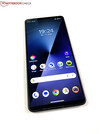



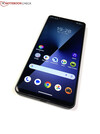


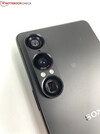



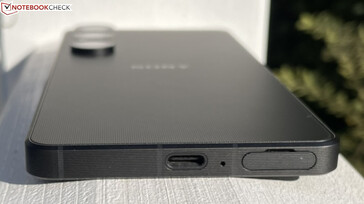









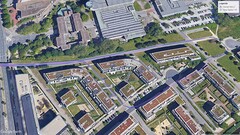









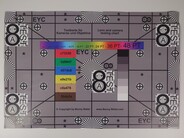






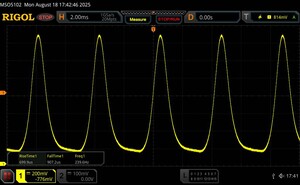








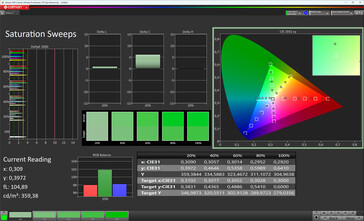



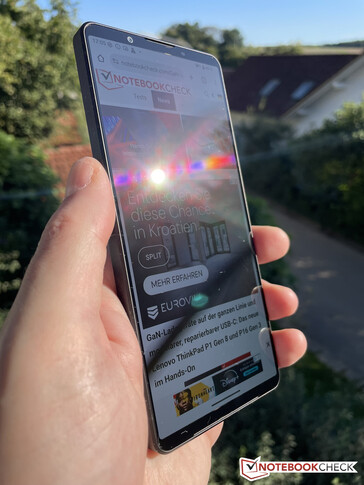


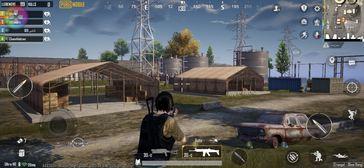

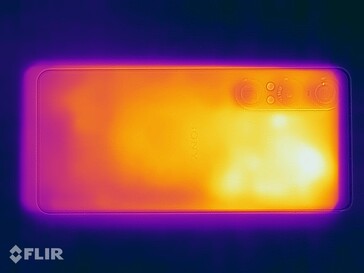
 Total Sustainability Score:
Total Sustainability Score: 







